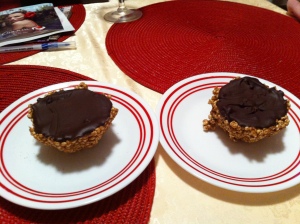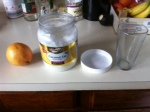For the first couple of months after our first couple of months in Buffalo, our first apartment together didn’t have a washer or dryer. I would haul three or four bags in 100% humidity and 100 degree heat to the laundromat around the corner that was owned by a Burmese immigrant every week just to clean our clothes. While I was always offered free coffee and free help by the men in the store, every afternoon would ultimately result in me struggling hard with big loads and big machines in the horrific conditions until I sweat all over the fresh laundry. Then there’s the folding, and the pushing a mountain of items into your overstuffed dresser, and the hanging on crappy hangers…And who doesn’t love when you forget to flip your clothes and they get to stinking like rotting foliage in the washing machine overnight? Just perfection.
What is that phrase that young folks say nowadays? “First world problems.” But really, I consider it more of an urban dilemma; I would happily wash my clothes in a clean, cool, nearby creek instead of in a hot vat of store-bought chemicals. You know, if there were a creek in the backyard instead of neighbors and all their own chemical backwash.
As part of my determination to purge harmful chemicals from our household, I made a list of all the different products that taint us by going in our mouths, touching our skin, etc. Laundry detergent makes that list, and like many other household products, affects both the human body and the surrounding environment. This goes beyond common concerns about impacts on the watershed in a give area; these products also negatively affect the air quality in our homes because of toxins that they emit and aren’t packaged in an easily reusable design, contributing to more plastics in landfills (when people don’t recycle) and in recycling (which can release toxic fumes in the recycle process) rather than being used again right at home. By making your own laundry detergent, you help to solve all of these problems. Better for the environment, better for you, and amazing for your clothes, this laundry detergent is cheap, easy, effective, smart, adaptable, HE-compatible, and smells great! With the inspiration I derived from Wellness Mama and Bonzai Aphrodite, I’ve got my own blend that has worked well for us.
Tip: You need a funnel, a 2 gallon pot, and 2 empty laundry jugs to make this recipe.
Summer Garden Laundry Detergent
1 bar castile soap (I use Kirk’s – good quality and cheaper than Dr. Bronner’s)
Water
Washing soda (had a bit of a hard time finding, Tops or Wegmans if you’re a WNY’er)
Borax
Baking soda
Ylang ylang essential oil
– Grate half a bar of castile soap on an old cheese grater (smallest or second-to-smallest grates will both work). I have found it useful to have a cheese grater specifically for kitchen work, and another specifically for household work – but it’s not necessary as long as you clean all that soap off of it well.
– Add soap to a large 2 gallon pot (we got ours for making beer) and dissolve it in a half gallon of water on medium-low heat. This should only take a few minutes (less than ten). Be sure to stir through and double check that the soap is completely dissolved, keeping in mind that using the second largest grate hole will mean waiting a bit longer to dissolve the soap.
-Right before you are ready to take the soap and water off the stove, begin running your hot water faucet until the water gets really, reeeeally hot. Remove the pot from the burner and add 1.5 gallons of that really hot water, stirring very gently. Then, add 1/2 cup of washing soda (sodium carbonate), 1/2 cup of baking soda (sodium bicarbonate), and 20-30 drops of ylang ylang essential oil (or to “taste”).
– Fill one laundry jug with this mixture by placing a funnel in the spout and gently pouring the detergent in. This is your “dark load” detergent. Then, set the pot back down and add about 1/2 cup of Borax to the pot and stir gently one more time. Fill the second laundry jug with the remaining detergent; this is your “light load” detergent. You’ll want to take note of the distinction, because one downside of the Borax is that it can make darker colors, particularly blacks, fade faster than you’d probably like. So, label! Or, if you’re like me and have jugs of different design on hand, I would recommend putting the “lights” detergent in the lighter jug.
Tip: Because you tend to run out of dark load detergent faster (most of us wear more darks than lights), I have a third and even fourth jug on hand so that you can make the batches only as you need them. Ask friends, neighbors, coworkers, or even laundromats for their empties so you can have backups, too.
And that’s it! Let the detergents cool overnight, shake, and use less than a 1/2 cup for a normal/large load! If you want to put vinegar in a fabric softener ball for the rinse cycle, you certainly can, but I can tell you I don’t bother. This recipe is so cheap. I paid 2-something for each box of Borax and washing soda, 99 cents for the bar of castile soap, less than 75 cents for a box of baking soda, and less than $10 for ylang ylang – plus, I use most of these ingredients in other products. Also, the jugs are technically free because they are reused.
Yup, we just made laundry better.
Note: The Environmental Working Group and other organizations note potential health hazards to using Borax; the EWG rates it as an “F” on its website www.ewg.org. You do not have to use Borax at all; you can increase the washing soda just a bit, and definitely increase the baking soda, to compensate. On a personal note, I don’t think a 1/2 cup of Borax in a huge jug of laundry detergent and airtight storage is a dangerous level of exposure, but it is up to you to decide. I wanted to try the recipe with it and without it, and while my whites come out very very clean, it is probably not entirely necessary. Rather than dump it, I am choosing to use it until it’s gone.
The rest of the ingredients in this recipe are rated very well by the EWG and are considered safe for humans and the environment.















